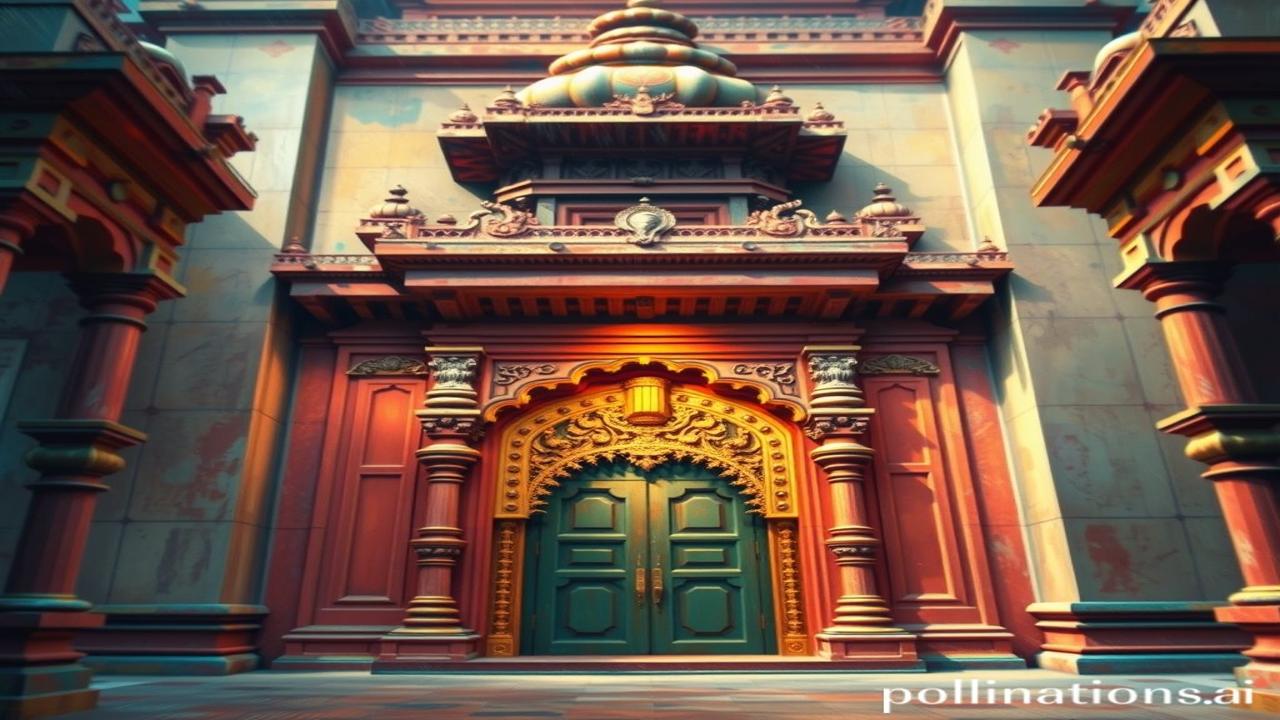Pattharon Mein Basi Rooh: Unveiling Traditional Artistic Elements in Architecture
Kabhi socha hai, kisi purani haveli ke darwaze ko chhoote hue, uski lakdi mein kitni kahaniyan kaid hongi? Waqt ki dhool jami hai us par, lekin har ek nakashi, har ek patthar, apne andar ek zamana chupaaye baitha hai. These architectural wonders, often overlooked in the rush of modern construction, are silent storytellers of our past. Chalo, aaj inhi ki baat karte hain.
The Foundation: Historical and Cultural Context
Traditional Indian architecture isn’t just about building structures; it’s about creating spaces that reflect our culture, philosophy, and beliefs. It’s a “Sangam” – a confluence of art, science, and spirituality. We’re talking about a tradition that spans millennia, from the Harappan civilization (around 3300-1700 BCE) to the elaborate temple complexes of the Cholas and the majestic Mughal forts.
Think about the Vaastu Shastra, an ancient Indian system of architecture that lays down principles of design, layout, measurements, ground preparation, space arrangement, and spatial geometry. This isn’t just superstition; it’s a holistic approach that considers the impact of architecture on human well-being and the environment.
The influence of various dynasties – the Mauryas, Guptas, Rajputs, and Mughals, to name a few – is clearly visible in the styles and techniques employed. The intricate carvings in Khajuraho temples, the grandeur of the Taj Mahal, and the imposing forts of Rajasthan – each is a testament to the artistic prowess and cultural values of its time. Each stone whispers a story of the past, “Woh eent ki deewar ab bhi waqt ke jakhmon ko chhupaye hai”.
Zameeni Sach – Log Aur Jeevan: The Human Element
Imagine a bustling workshop in the 12th century, somewhere in South India. Artisans, their hands stained with ochre and turmeric, are meticulously carving stone panels for a new temple. Maali (gardeners) are carefully planting fragrant jasmine and champa around the temple complex.
“Arre Rama, yeh shankh ka chinha thoda aur gehra karo. Bhagwan Vishnu ko prasann karna hai,” the master artisan instructs. Rama, a young apprentice, nods diligently, his brow furrowed in concentration. He dreams of one day creating sculptures that will inspire awe and devotion in generations to come.
Meanwhile, Ma Rukmini ne aaj naye kapde pehne, kyunki mandir mein utsav tha… The entire village is abuzz with excitement, preparing for the consecration ceremony. The temple is not just a place of worship; it’s the heart and soul of the community. The sounds of chanting, the fragrance of incense, and the vibrant colors of the festivities create a sensory experience that binds everyone together.
It was a world where artistry was intertwined with daily life. Every brick laid, every carving made, was an offering, a testament to their devotion and skill.
Dharohar Aur Pehchan: Cultural Significance Today
Even today, the echo of these traditional artistic elements resonates deeply within us. Look at the Jharokha (ornate windows) in modern houses, inspired by Rajasthani architecture. Or the intricate motifs drawn from ancient temple carvings used in contemporary textiles.
These aren’t just decorative elements; they are symbols of our heritage, reminders of our roots. They connect us to our past and help us understand who we are as a nation. Bharatiyata isn’t just about waving the flag; it’s about recognizing and celebrating the artistic genius embedded in our architectural traditions. “Yeh Kala, yeh Shakti, yeh Dharohar… yeh hai hamari pehchan.”
Mazedar Tathya Ya Bhram-Bhanjak: Fun Fact or Myth-Buster
Log samajhte hain ki Mughal architecture sirf Islamic influence ka result hai. Lekin asli sach yeh hai that it’s a beautiful fusion of Persian, Indian, and Central Asian styles. Think about the use of indigenous materials like red sandstone alongside marble. This blending of cultures is what makes Mughal architecture so unique and captivating.
Drishya Aur Bhavnayein: Visual & Sensory Layer
Close your eyes and imagine standing before the Taj Mahal at dawn. The air is cool and crisp, carrying the scent of roses from the surrounding gardens. The white marble shimmers in the soft light, reflecting the sky like a giant mirror. The gentle sounds of the Yamuna river flowing nearby create a sense of tranquility and awe.
The temple walls feel rough and warm beneath your fingertips, etched with the stories of gods and goddesses. The scent of sandalwood incense hangs heavy in the air, mingled with the sweet aroma of jasmine garlands. You can almost hear the echoes of ancient chants and the rhythmic clang of temple bells. “It’s an experience that transcends the visual, touching the very core of your being.”
Antim Vichar Ya Uddharan: Closing Insight or Quote
As we embrace modernity, let us not forget the artistic wisdom of our ancestors. Let us strive to preserve and celebrate the architectural marvels that stand as silent witnesses to our glorious past.
“Vasudhaiva Kutumbakam” – The world is one family. Let our architecture reflect this unity, this harmony, this respect for all life.
“Woh patthar ab bhi bolta hai, sunne wala chahiye.”
